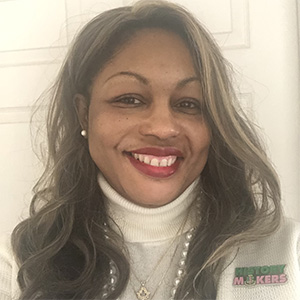Equitable hiring strategies for a diversified faculty
Most institutions of higher education report that diversifying their faculties continues to be a challenge. To address this challenge, 21 biomedical engineer–researchers have developed an evidence-based road map that describes six important strategies for a plan of action to hire faculty from historically marginalized and excluded backgrounds.
The first strategy these authors offer in their recent paper in Nature Biomedical Engineering is to prepare the work environment. They articulate the importance of this seemingly obvious detail and thereby set the foundation for the effectiveness of the other five strategies.

In “Preparing the Department,” the authors suggest that academic departments should conduct a self-reflection by evaluating five areas: growth, academic leadership, current department climate, improvement of the department’s culture and accountability and past mistakes. Each of these areas offers an opportunity to reimagine the current environment into one that is conducive to great achievement by actively and intentionally creating an overall inclusive culture; thereby, setting a department onto a path for greater overall well-being and productivity for all of its members.
The second strategy, “Preparing for the Search,” also seems obvious; however, it is a much greater undertaking than many academics may realize. The authors identify and evaluate challenges, and then provide seven specific approaches to mitigate them.
As I read this strategy, one approach, “train the search committee,” stood out — this important detail often goes unnoticed. However, to mitigate behaviors caused by unconscious or implicit biases — or as I identify them, microaggressions in decision-making — training search committee members and, as the authors suggest, using a candidate selection rubric, can be critical to the overall outcome in selecting faculty from historically marginalized and excluded backgrounds. As presented, the authors have clearly considered such circumstances and provide thoroughly measured mechanisms to mitigate this primary source of historical, systemic exclusion.
Also, the authors recognize the potential counterattack regarding such diversity, equity and inclusion training. Hence, they suggest that such training be “coupled with activities that help the committee recognize and address potential defensiveness.” Furthermore, the authors address the need to “embrace new hiring practices” as well as “revision of application materials” to be holistic, transparent and inclusive to mitigate disparities.
Additional strategies offered by the authors include “Recruiting a Diverse Applicant Pool,” “Conducting Holistic, Equitable Assessments” of candidates, “Conducting Inclusive Interviews,” “Making the Offer” and “Recruiting Candidates” as well as a “Call to Action.” Like the prior strategies described in this article, each of these is presented with its own approaches and provides tactical solutions to address identified challenges in the field of biomedical engineering, which are applicable throughout the academy, to address challenges to equitable hiring.
As presented, this road map provides solutions that have the potential to lead us to a more perfect, inclusive union in an academy that reflects us all.
Enjoy reading ASBMB Today?
Become a member to receive the print edition four times a year and the digital edition monthly.
Learn moreFeatured jobs
from the ASBMB career center
Get the latest from ASBMB Today
Enter your email address, and we’ll send you a weekly email with recent articles, interviews and more.
Latest in Careers
Careers highlights or most popular articles

Building the blueprint to block HIV
Wesley Sundquist will present his work on the HIV capsid and revolutionary drug, Lenacapavir, at the ASBMB Annual Meeting, March 7–10, in Maryland.

Upcoming opportunities
Present your research alongside other outstanding scientists. The #ASBMB26 late-breaking abstract deadline is Jan. 15.

Designing life’s building blocks with AI
Tanja Kortemme, a professor at the University of California, San Francisco, will discuss her research using computational biology to engineer proteins at the 2026 ASBMB Annual Meeting.

Upcoming opportunities
#ASBMB26 late-breaking abstract submission opens on December 8. Register by Jan. 15 to get the early rate on our Annual Meeting.

Make your abstract stand out
Ensure your research is impossible to overlook. Get quick, practical reminders for crafting an abstract that attracts readers and helps you build connections at the conference.

Inside industry postdocs
As more Ph.D. scientists look beyond academia, industry postdocs offer a new kind of training, where mentorship meets mission-driven research. Fellows at Pfizer and Genentech share how these programs prepare them to translate discovery into impact.

